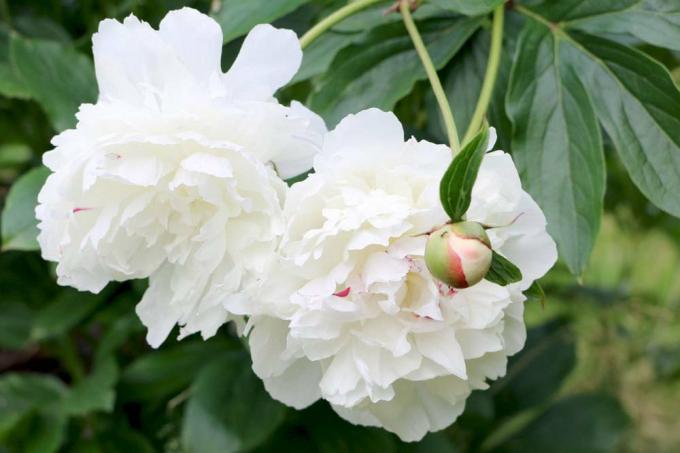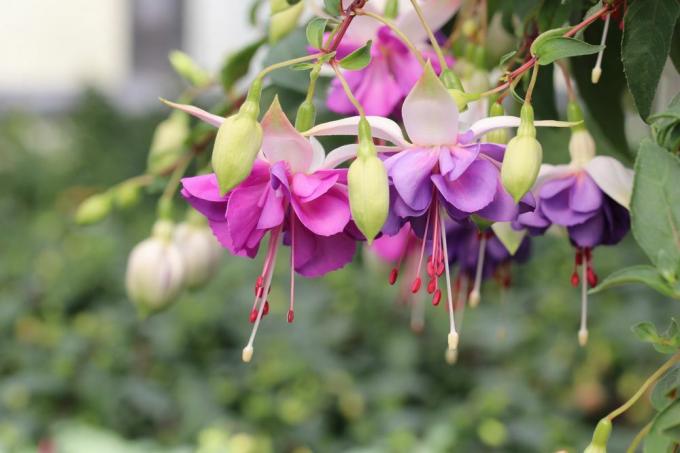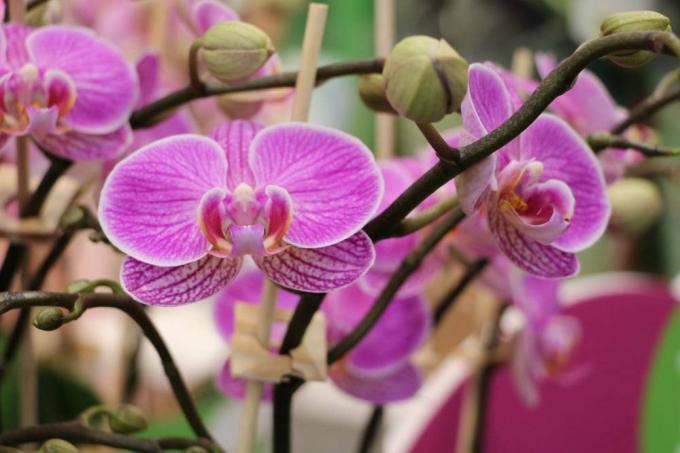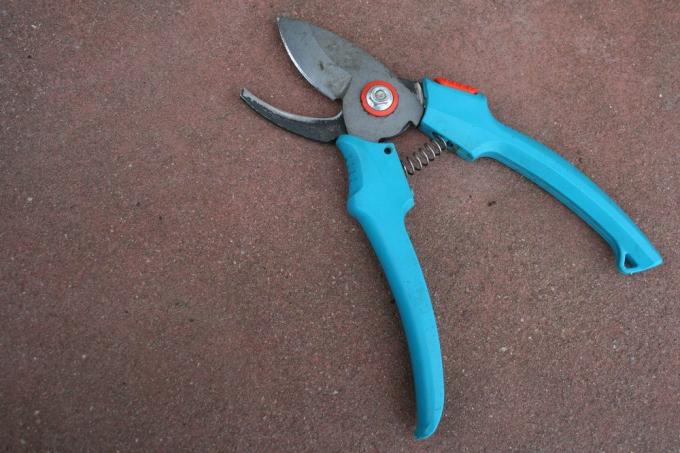
table of contents
- Vegetative propagation
- division
- Head and part lumber
- Crackling
- Sinker
- Foothills
- Daughter tubers
- advantages and disadvantages
- Important notice
The vegetative reproduction of plants is asexual reproduction. This means that no seeds are used for propagation, but parts of the mother plant. As a result, genetically identical offspring of the mother plant emerge, which are often also referred to as clones.
Vegetative propagation
Types of vegetative reproduction
There are different options for this type of reproduction, depending on the type of plant.
- division
- Head and partial cuttings
- Head and part lumber
- Leaf cutting
- Crackling
- Root cuttings
- Sinker
- Offshoot
- Foothills
- Daughter onions
- Daughter tubers
- Leaf cuttings
- Kindel

division
A division takes place in clumpy growing plants. They are cut, pricked apart, or broken apart. It is important that each part has enough root and shoot mass. It is best to divide it during periods of dormancy. Examples of plants that can be divided are as follows.
- Sun hat
- Lady's mantle
- Peony
- Daylily

Head and partial cuttings
Head and partial cuttings for reproduction are taken during the growing season. With this form of vegetative propagation, strong, young parts of the plant are cut off. Each head cutting should have at least two nodes after it has been cut. In addition, it should have a mature leaf at the top. The lower node should be approx. half a centimeter above the bottom of the cutting.
For reproduction, the head cuttings are inserted into a hole in the ground. Insert the cutting so deep into the soil that the node with the leaf protrudes from the soil. Then press the soil sideways and water the cutting. If it begins to sprout, the cutting is rooted and can be moved after a while, when it has grown vigorously.
Tip: To help you get started, cover the cutting with a translucent protection against evaporation so that it does not dry out. As soon as the cutting is rooted, the evaporation protection can be gradually removed.
Examples of this are those listed below.
- Stevia
- mint
- Rubber tree
- tomato

Head and part lumber
Timber cuttings are annual, lignified shoot parts. The strongest possible shoots are cut during the dormancy period. In contrast to cuttings, they do not have a leaf. Ideally, cuttings are between ten and twenty centimeters long and cut close to a node.
To overwinter, they are placed in damp paper or sand. If the ground frost is no longer to be expected, the cuttings are freshly cut and inserted into a hole in the ground in the direction of growth. The top node must protrude from the ground. Then the earth is pressed down and poured on.
Tip: Since head and partial cuttings have no leaves, they develop more slowly than cuttings, but do not need any protection against evaporation.
Leaf cutting
A leaf cutting is when a leaf (or leaves) with or without a stem is stuck into the ground. The new plants then grow at the base of the leaves.
Crackling
Cracks are torn from the mother plant. The annual shoots are torn in such a way that some cells from the old shoot still adhere. If there are "bark flags" you can shorten them to about one centimeter. Cracks can be leafy or leafless. It is important that they are immediately put into the ground.
Tip: Always insert cracks into a slightly larger hole so that the cells of the old shoot are not stripped off when you insert them.
Examples of this are those listed below.
- Yew trees
- Fuchsias
- Roses

Root cuttings
A root cuttings are a piece of young, strong root that is cut by the mother plant without a sprout. The root piece should have a length of approx. have ten centimeters. After cutting, the root cuttings are placed or stuck in loose soil. Then the earth is pressed down and poured on. If the root cuttings sprout in several places, the offspring can be divided.
Tip: It is best to cut the piece of root during the dormancy period and let it grow on in a warmer place.
Examples of a root cuttings are those mentioned below.
- Pusterblume (Taraxacum)
- Raspberries
- Blackberries

Sinker
When lowering, a branch close to the ground is bent to the ground and sunk into the ground. It is important that the tip of the branch looks out of the ground and that the branch has a sleeping eye at the point where it is buried. So that the branch stays on the ground, it is fixed to the ground with a stone or a branch fork. Then it is covered with earth and poured on. The roots form within one vegetation period. Once roots have formed, the sinker with roots and shoot tip can be separated from the mother plant and moved. Examples of sinkers are the following.
- Currants
- Raspberries

Offshoot
With the offshoot, a branch close to the ground is anchored to the ground, as is the case with the sinker. If new, vertical shoots have formed, the branch is covered with earth so that only the young shoots protrude from the earth. Then it is poured vigorously.
Tip: If you put the branch in a small ditch, the water will not run as easily when it is poured on.
The young shoots take root by the end of the vegetation period. However, you should only separate them from the mother plant after winter so that they can still be taken care of by the mother plant during the cold season. Examples are representatives as listed below.
- Raspberries
- Blackberries
- Currants

Foothills
A runners are used when the plant forms a shoot on which young plants can develop. They are initially taken care of by the mother plant, but can, depending on the plant, take care of themselves over time. If many young plants have formed, you should only use the most vigorous ones for propagation. Examples are given below.
- Green lily
- bamboo
- mint
- yarrow

Daughter onions
Daughter onions form at the root of the mother onion. These smaller bulbs can be removed. They then develop new plants. Examples are as follows.
- Daffodils
- Onions
Daughter tubers
As with daughter onions, smaller tubers form on the mother tuber that you can use for propagation.
Tip: Pure storage tubers cannot sprout without a piece of sprout.
Examples are the representatives listed below.
- potatoes
- sweet potato

Kindel
Kindel are side shoots that form roots without contact with the ground. They can be removed from the mother plant as they continue to grow as independent plants after they have been planted in the ground. Examples are as follows.
- Bromeliads
- Christmas cactus
- Orchids

advantages and disadvantages
Vegetative propagation is a method of reproduction that can be used with many plants and has far more advantages than disadvantages. The growth of the offspring is usually much shorter than when propagating with seeds. Vegetative propagation is also usually much easier, for example with cuttings. Since the offspring are clones of the mother plant, the properties of the mother, such as shape, color or taste, are retained. In addition, with vegetative propagation, at least the offspring of dying plants can be saved if cuttings are taken in good time.
Tip: The vegetative form of propagation is the only way to propagate plants that do not develop flowers and seeds in this country.
Where there are advantages, there are disadvantages. So the susceptibility to diseases and remains Pests as the genetic material is not refreshed.

Important notice
What is to be considered?
In order for vegetative reproduction to succeed, you should consider the following.
- only use clean and sharp cutting tools
- Pay attention to strong and healthy mother plants (exception: rescue dying plants)
- do not use soil infected with pathogens or pests for the offspring



